Buying Guide for the Best Motorcycle Helmet Speakers
Choosing the right motorcycle helmet speakers can make your rides more enjoyable and convenient, whether you want to listen to music, take calls, or follow GPS directions. The key is to find a set that fits comfortably in your helmet, delivers clear sound, and matches your riding needs. Before buying, think about how often you ride, the type of helmet you use, and what features matter most to you, such as sound quality, ease of installation, and connectivity options.Sound QualitySound quality refers to how clear and rich the audio is when you listen to music, calls, or navigation prompts. This is important because road and wind noise can make it hard to hear, especially at higher speeds. Sound quality is usually described in terms of clarity, bass, and volume. Some speakers focus on strong bass, while others prioritize clear vocals. If you mostly listen to podcasts or take calls, clarity is more important. For music lovers, a balanced sound with good bass might be better. Try to pick speakers that offer the sound profile you prefer and can get loud enough to be heard over your engine and wind noise.
Comfort and FitComfort and fit describe how well the speakers sit inside your helmet and how they feel during long rides. This is crucial because uncomfortable speakers can cause pressure points or even pain. Speakers come in different shapes and thicknesses, and some include extra padding or mounting options. If you have a snug helmet, look for slim or low-profile speakers. For helmets with more space, thicker speakers might be fine. Always consider how much room you have in your helmet and whether the speakers will interfere with the helmet’s fit or safety.
ConnectivityConnectivity refers to how the speakers connect to your devices, such as your phone or GPS. Most helmet speakers use Bluetooth, which allows for wireless connections and hands-free use. Some may use a wired connection, which can offer more reliable sound but may be less convenient. If you want to connect to multiple devices or use intercom features, look for speakers with advanced Bluetooth versions or multi-device pairing. Choose the connectivity type that matches your riding habits and the devices you plan to use.
Battery LifeBattery life is how long the speakers can operate before needing a recharge. This is important for longer rides or trips where charging options are limited. Battery life can range from a few hours to over a day, depending on usage and volume. If you take short rides, a shorter battery life may be fine. For touring or commuting, look for speakers with longer battery life to avoid interruptions. Always check the estimated battery life and consider your typical ride duration.
Ease of InstallationEase of installation means how simple it is to set up the speakers in your helmet. Some speakers are designed for quick, tool-free installation, while others may require more effort or even minor modifications to your helmet. If you’re not comfortable with DIY tasks, look for speakers with adhesive pads, Velcro, or magnetic mounts. If you’re willing to spend more time, you might get a more integrated look with speakers that require a more involved installation. Choose based on your comfort level and how often you might want to move the speakers between helmets.
Microphone QualityMicrophone quality is important if you plan to make calls or use voice commands while riding. A good microphone will pick up your voice clearly and reduce wind or engine noise. Some microphones are built into the speakers, while others are on a boom or wire for better placement. If you make frequent calls or use intercom features, look for speakers with noise-cancelling microphones. If you rarely use the mic, this may be less important.
Water and Dust ResistanceWater and dust resistance describes how well the speakers can handle exposure to rain, sweat, or dust. This is important for riders who travel in all weather conditions. Resistance is usually rated by an IP (Ingress Protection) code, with higher numbers offering better protection. If you ride in wet or dusty environments, look for speakers with a higher resistance rating. For fair-weather riders, basic resistance may be enough.

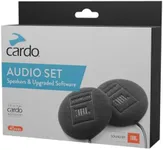
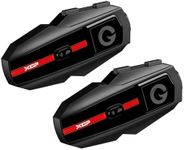

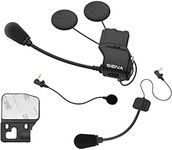
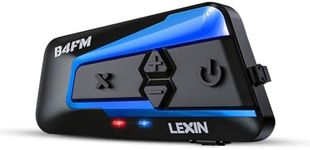
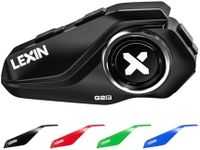




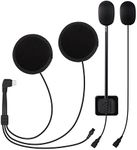


![GEARELEC Motorcycle Helmet Speakers [ HiFi Stereo Sound ] [ Screen and RGB Lights ] 80Mph Clear Calls Motorcycle Helmet Bluetooth Headset, 2000M 6 Riders Motorcycle Bluetooth Headset](https://images-proxy.bestreviews.guide/Up_CZXS3KXj3IddDyuXP0fLSYjI=/0x150/https://m.media-amazon.com/images/I/41TmWXVZ+RL._AC_CX679_.jpg)




